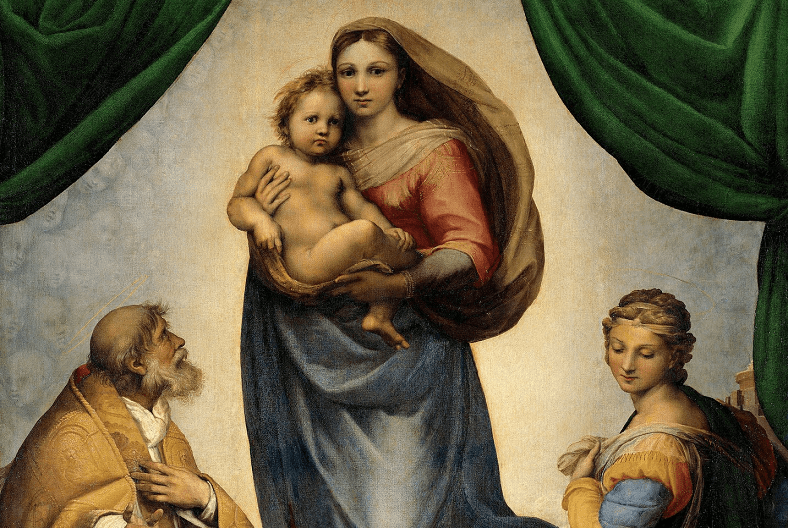There is a popular legend that one of the Titans of the Renaissance depicted Pope Sixtus II with an extra finger on his hand in order to hint at his name. We checked whether this is actually true.
Information about Sixtus's sixth finger is widespread. For example, she is cited by the magazine "Around the World" and famous writer Yuri Nagibin.
It was also heard in one of the old episodes of the TV show “What? Where? When?". TV presenter Vladimir Voroshilov even included a corresponding question with commentary in his book "Game Phenomenon":
“Before you lies a reproduction of a painting certainly known to each of you. Did you know that the artist encrypted the title of this painting? In one minute you must solve the artist's code.
Answer:
Look carefully! The hand of the left figure has six fingers. I don’t think that six-fingered figures are often found in painting. This is the figure of Saint Sixtus. Six, as you said during the discussion, is sixtus in Latin. It is in these six fingers that the code for the name of Raphael’s “Sistine Madonna” lies.”
This legend is well known in the West. So, back in 1909, the philosopher Paul Carus wrote about her in the book "Philosophy as a Science".
First, we note that the name Sixtus, despite the similarity of roots, was not originally associated with the number six. The oldest documents about the first three popes of this name use its Greek form Xystus, meaning "polished, flawless." However, it is known that Sixtus I was the sixth pontiff after St. Peter, which theoretically could have influenced the choice. So the subsequent communication of linguists is completely can't refute. The only striking difference is in the second letter: the name Sixtus (Latin) or Sisto (Italian) and the numeral sextus or sesto, respectively.
As for Raphael’s canvas, it was created by the master for the altar of the church of the monastery of St. Sixtus II in Piacenza. Depicted on the left side of the canvas, Sixtus II, a Greek by origin, went down in history as a martyr. A difficult fate awaited the painting dedicated to him. In the 20th century, she miraculously survived the bombing of Dresden (she was evacuated outside the city and hidden in a quarry), after the war she ended up in the USSR for ten years and only then returned to the capital of Saxony. Thanks to this happy coincidence, as well as the unusually large (265 by 196 cm) dimensions of the canvas, we can still appreciate Raphael’s masterpiece in detail. In particular, look at the very hand of Sixtus II:

As you can see, there is no sixth finger in the picture. It's just a part of the palm whose shape may appear slightly unnatural and lead to visual deception. There is also no historical evidence of polydactyly (a congenital pathology of the hand, characterized by the presence of extra fingers) of the pontiff. The sixth finger of Sixtus on Raphael’s canvas is just a beautiful legend that has nothing to do with reality.
Fake
Read on topic:
1. http://chgk.tvigra.ru/library/?fenomen/09#cur
2. http://www.3pp.website/2011/10/recounting-raphaels-digits.html
If you find a spelling or grammatical error, please let us know by highlighting the error text and clicking Ctrl+Enter.







